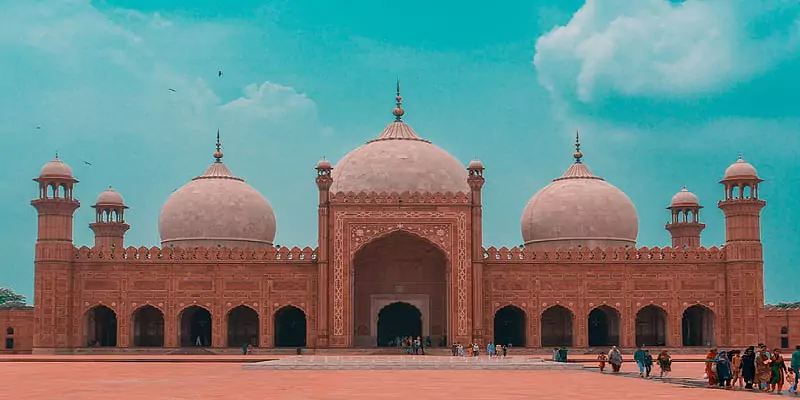Badshahi Mosque
The Badshahi Mosque, located in Lahore, Pakistan, is a testament to the grandeur and magnificence of Mughal architecture. Steeped in history, this iconic structure stands as a symbol of religious devotion, cultural richness, and architectural brilliance. With its imposing structure, intricate design, and rich heritage, the Badshahi Mosque has become a landmark not only in Lahore but also in the broader context of Islamic architecture.
Commissioned by the sixth Mughal Emperor, Aurangzeb, in 1671, the Badshahi Mosque was designed by the renowned architect Ustad Ahmad Lahori. The mosque was built to commemorate Aurangzeb's military victories, particularly his successful campaigns in the Deccan region of India. The construction of the mosque spanned over two years, from 1671 to 1673, and it was completed at an extravagant cost, reflecting the opulence of the Mughal Empire during that era.
One of the mosque's most striking features is its imposing size, making it one of the largest mosques in the world. The Badshahi Mosque stands proudly on the western side of Lahore's historic Walled City, overlooking the bustling streets and the Ravi River. The vast courtyard of the mosque can accommodate thousands of worshippers, creating a sense of grandeur and communal spirit. The main prayer hall, adorned with intricate marble inlay work and Persian calligraphy, adds to the mosque's aesthetic allure.
As one approaches the Badshahi Mosque, the first impression is of its colossal scale and the intricate detailing that covers its façade. The red sandstone and white marble used in its construction give the mosque a warm and inviting appearance, while the large central dome and four towering minarets add to its regal charm. The minarets are adorned with delicate embellishments, including marble inlay, calligraphy, and geometric patterns, showcasing the Mughals' mastery of artistic craftsmanship.
The entrance to the mosque is through a majestic gateway, known as the Alamgiri Gate, named after Aurangzeb, whose title was Alamgir. The gate features impressive domes and chambers, creating a sense of anticipation as one approaches the main courtyard. The central courtyard is vast, with a reflecting pool that enhances the mosque's visual appeal, especially during sunset when the sun's rays dance on the water's surface, creating a serene and captivating atmosphere.
Inside the mosque, the main prayer hall is a marvel of Mughal architecture. The hall is adorned with intricate frescoes, floral patterns, and verses from the Quran, all executed with meticulous attention to detail. The mihrab, indicating the direction of Mecca, is an ornate niche embellished with fine marble inlay and intricate geometric designs. The large dome above the prayer hall is a masterpiece in itself, with a breathtaking interior that features delicate floral motifs and intricate patterns.
The Badshahi Mosque's interior also houses the tomb of Emperor Aurangzeb, adding a historical and spiritual dimension to the site. The tomb is a simple, unadorned structure, reflecting Aurangzeb's austere lifestyle. The juxtaposition of the grand mosque and the humble tomb serves as a reminder of the diverse personalities and legacies of the Mughal emperors.
The mosque's historical significance goes beyond its architectural brilliance. It has witnessed numerous historical events, including the Sikh occupation of Lahore in the early 19th century and the British colonial period that followed. Despite facing neglect and deterioration during certain periods, extensive restoration efforts have preserved and restored the Badshahi Mosque to its former glory.
The Badshahi Mosque is not merely a place of worship; it is a cultural and architectural treasure that reflects the artistic achievements of the Mughal Empire. Its enduring legacy has made it a UNESCO World Heritage Site, drawing visitors and scholars from around the world to marvel at its beauty and immerse themselves in the rich history that surrounds it.
In conclusion, the Badshahi Mosque in Lahore, Pakistan, stands as a masterpiece of Mughal architecture, a testament to the grandeur of the Mughal Empire, and a symbol of cultural and religious heritage. Its colossal size, intricate design, and historical significance make it a must-visit destination for anyone interested in the rich tapestry of Islamic art and architecture. The Badshahi Mosque continues to captivate the hearts and minds of those who have the privilege of experiencing its beauty and historical resonance.

